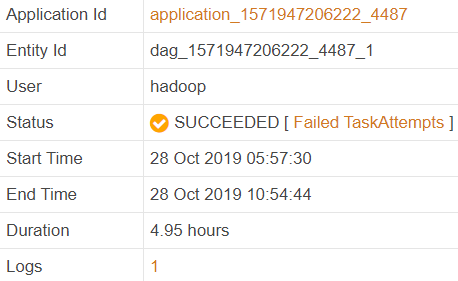On one of the clusters I noticed an increased rate of shuffle errors, and the restart of a job did not help, it still failed with the same error.
The error was as follows:
Error: Error while running task ( failure ) :
org.apache.tez.runtime.library.common.shuffle.orderedgrouped.Shuffle$ShuffleError:
error in shuffle in Fetcher
at org.apache.tez.runtime.library.common.shuffle.orderedgrouped.Shuffle$RunShuffleCallable.callInternal
(Shuffle.java:301)
Caused by: java.io.IOException:
Shuffle failed with too many fetch failures and insufficient progress!failureCounts=1,
pendingInputs=1, fetcherHealthy=false, reducerProgressedEnough=true, reducerStalled=true

